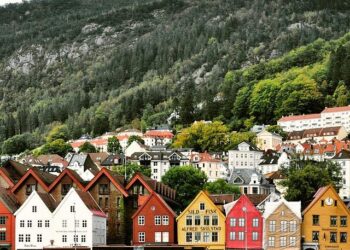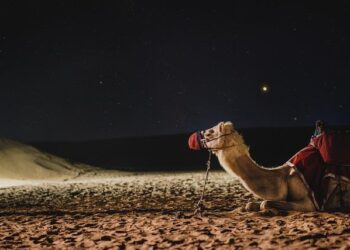Nestled between mainland Norway and the North Pole, Svalbard is a remote archipelago known for its rugged landscapes, polar bears, and extreme Arctic conditions. As interest in this unique territory grows-from scientists and adventurers to year-round residents-understanding what life entails on Svalbard has become increasingly relevant. This article provides an in-depth look at living in Svalbard, exploring the challenges and opportunities of daily life in one of the world’s northernmost communities. From housing and infrastructure to governance and cultural dynamics, here is everything you need to know about making a home in this extraordinary corner of Norway.
Understanding Svalbard’s Unique Climate and Its Impact on Daily Life
Svalbard’s climate is nothing short of extraordinary, defined by its Arctic location and extreme seasonal shifts. Temperatures can plunge to below -30°C during the long winters, while summers often remain cool, rarely exceeding 7°C. The archipelago experiences the phenomenon of polar night, with continuous darkness lasting from late October to mid-February, and conversely, the midnight sun from April to August, when daylight never fades. These conditions influence everything from transportation and infrastructure to the daily routines of residents, who must adapt to periods of intense cold and light-or lack thereof.
The unpredictable weather creates unique challenges but also opportunities for life here. Residents rely heavily on specialized clothing, heating systems, and well-maintained shelters to withstand the cold. Wildlife, including polar bears, thrives in this environment-prompting locals to carry safety equipment and maintain constant vigilance outdoors. For a quick snapshot of the climate’s impact, consider the following aspects:
- Energy usage: High demand for heating year-round.
- Food supply: Necessity for imports due to limited local agriculture.
- Transportation: Reliance on snowmobiles and boats instead of cars in some seasons.
- Social life: Indoor cultural activities flourish during extended darkness.
| Season | Average Temp (°C) | Daylight Hours | Key Impact | |||||||||||||||||||||||||||||||||||||||||||||||||||||
|---|---|---|---|---|---|---|---|---|---|---|---|---|---|---|---|---|---|---|---|---|---|---|---|---|---|---|---|---|---|---|---|---|---|---|---|---|---|---|---|---|---|---|---|---|---|---|---|---|---|---|---|---|---|---|---|---|
| Winter (Dec-Feb) | -20 to -30 | 0 (Polar Night) | Limited mobility, energy spike | |||||||||||||||||||||||||||||||||||||||||||||||||||||
| Spring (Mar-May) | -5 to 0 | Increasing daylight | Start of outdoor activities | |||||||||||||||||||||||||||||||||||||||||||||||||||||
| Summer (Jun-Aug) | 5 to 7 | 24 (Midnight Sun) | Boating and hiking season | |||||||||||||||||||||||||||||||||||||||||||||||||||||
| Autumn (Sep-Nov) | -5 to -15 |
| Season | Average Temp (°C) | Daylight Hours | Key Impact |
|---|---|---|---|
| Winter (Dec-Feb) | -20 to -30 | 0 (Polar Night) | Limited mobility, energy spike |
| Spring (Mar-May) | -5 to 0 | Increasing daylight | Start of outdoor activities |
| Summer (Jun-Aug) | 5 to 7 | 24 (Midnight Sun) | Boating and hiking season |
| Autumn (Sep-Nov) | -5 to -15 | Decreasing daylight | Preparation for winter, reduced outdoor activity |
If you want me to help with anything specific related to Svalbard’s climate info, or assist further with formatting, feel free to ask!
Navigating Residency and Employment Regulations in the Arctic Archipelago
Residing in the Arctic Archipelago, specifically Svalbard, entails a unique legal framework that diverges significantly from mainland Norway. Unlike traditional residency permits, Svalbard operates under a principle of open access, requiring no visa or permit for most nationalities to live or work on the islands. However, this freedom comes with a catch: individuals must be self-sufficient and able to support themselves financially. Local authorities closely monitor this requirement, and those unable to sustain themselves may face repatriation. Moreover, despite the lack of standard immigration restrictions, residents must register with the local administration upon arrival to ensure clear records and access to necessary services.
Employment regulations here are equally distinctive, reflecting the archipelago’s isolated and fragile ecosystem. Jobs in government, research, tourism, and mining dominate the market, with emphasis on sustainability and environmental protection. Employers must adhere to strict rules regarding worker safety and environmental impact, given the delicate Arctic conditions. For prospective employees, adaptability and a readiness to comply with these unique standards are essential. Below is a quick snapshot of key residency and work requisites:
- Self-sufficiency: Proof of financial independence is mandatory;
- Registration: Mandatory local registration within seven days of arrival;
- Employment sectors: Focused on research, tourism, and resource management;
- Safety compliance: Strict adherence to Arctic occupational safety standards;
- Environmental regulations: All jobs must comply with sustainable practices.
| Requirement | Details | |||||||||||||||||||||||
|---|---|---|---|---|---|---|---|---|---|---|---|---|---|---|---|---|---|---|---|---|---|---|---|---|
| Residency Permit | Not required under open access principle | |||||||||||||||||||||||
| Employment Sectors | Tourism, Research, Mining, Administration | |||||||||||||||||||||||
| Self-Sufficiency Proof | Bank statements or employment contracts | |||||||||||||||||||||||
| Registration Deadline | 7 days post-arrival | |||||||||||||||||||||||
Work Permits It looks like your table was cut off at the last row. Here’s the completed version of your table including the “Work Permits” row to match the information in your text:
If you’d like, I can also help you polish or expand the content further! Essential Tips for Adapting to Svalbard’s Remote and Extreme EnvironmentAdjusting to Svalbard’s isolated setting demands a solid understanding of its unique challenges. Residents quickly learn that preparation is critical, especially when it comes to weather conditions that can shift rapidly. Ensuring you have proper thermal clothing and layering options is non-negotiable, as temperatures can plummet drastically with strong Arctic winds. Additionally, daylight hours vary dramatically throughout the year, with polar night cloaking the land in darkness for months. This affects both mental well-being and daily routines, making it essential to establish consistent habits and embrace natural light whenever possible. Safety is another vital concern in this unforgiving environment. The presence of polar bears necessitates constant vigilance, with people often carrying firearms or flare guns when venturing outside settlements. Navigating remote areas requires solid communication tools such as GPS devices and satellite phones. Below is a summary of must-have items and practices to stay secure and comfortable while living in this extreme locale:
The Way ForwardLiving on Svalbard offers a unique blend of extreme natural beauty, challenging conditions, and a close-knit community unlike anywhere else in the world. From navigating polar nights and Arctic temperatures to embracing the opportunities and responsibilities of life in this remote Norwegian archipelago, residents must be prepared for both isolation and adventure. As interest in the region continues to grow due to its scientific significance and strategic location, understanding the realities of everyday life on Svalbard remains essential for anyone considering making this extraordinary place their home. Whether for work, research, or a fresh start, the spirit of resilience and adaptation defines life on Svalbard-truly a frontier living experience at the top of the world. ADVERTISEMENT |
















